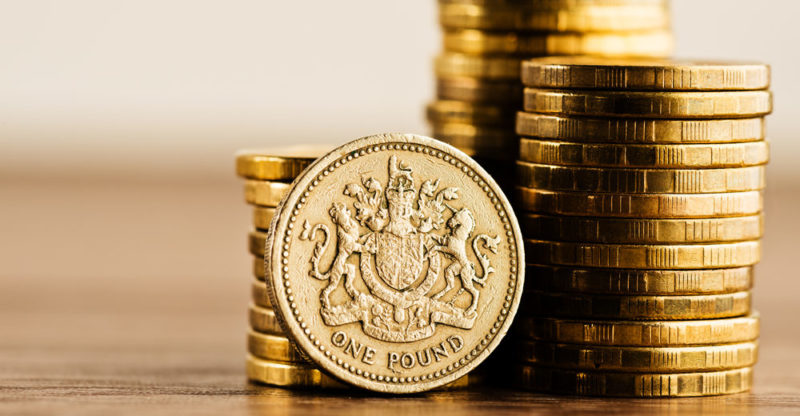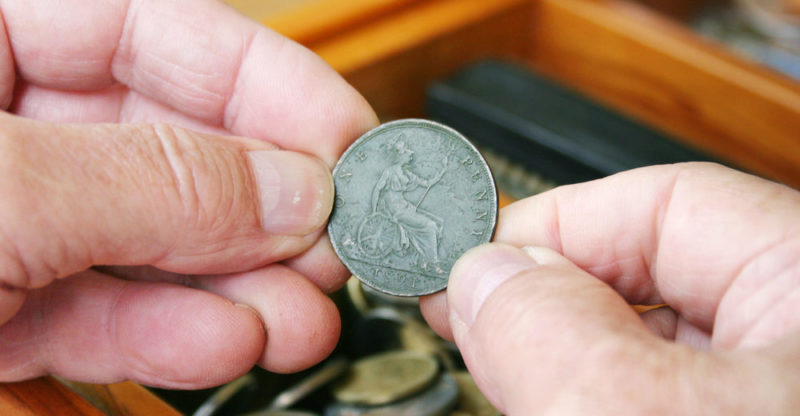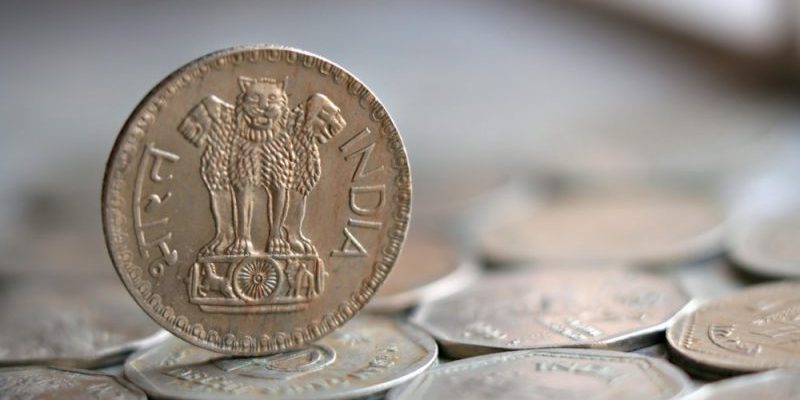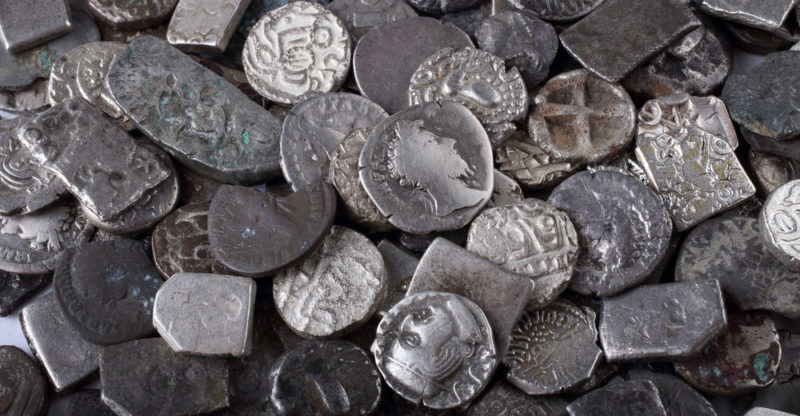We explain what coins is, how it originated and what it is for. Also, what are its characteristics, classification and verification.
What is the coin?
Coin is a piece of metal that is used in modern societies for the exchange of goods or services . In other words, it is a measure of the value or cost of objects or services. In this sense, the term is taken as a synonym for the word money .
Thus, each country will take a different name for the coin that is valid as such for economic exchange in that particular society . There are different values that are given to coins. There may be coins of 1, 2, 5, 10, etc.
In addition, the coins can be printed with different images of heroes, places or historical events . The strongest and best known currencies in the world today are the euro and the dollar.
On the other hand, it is important to highlight that, although the coins can be made in a specific piece of metal , only the central bank authorized by each nation will have permission to issue coins because the issuance of coins modifies the internal economy of a country or Nation.
History of the coin
Although today the coins has a certain value for which goods or services are exchanged, in ancient times there were no coins as such . On the contrary, the exchange was effected through the value of the objects and their exchange.
In this way, a more exotic, sophisticated or difficult to obtain object had more value than one that was common or easy to make.
At present, the price of products or services is also determined based on the quality, preparation, durability or processing time in order to determine the price in the market .
The difference from ancient times is that ancient coins (as metal) did not exist. But the exchange in which something was worth something else, yes.
Coins function

The main function of currencies is to promote the exchange of goods and / or services . Without this coins, current societies would not be able to carry out exchanges.
Therefore, it is considered as the central axis of economic life in a society . Consequently, the main function of the coins is to act as a means of payment.
Types of coins
There are two main types of coins:
- Account currencies. It is a type of currency that represents debts, expresses prices and represents purchasing power.
- Currency proper. It is one that is delivered in exchange for the acquisition of a product or service.
Physical characteristics of the coins

- Weight. Each coin has a specific weight
- Used material. Each coin will be made based on a specific material that must be abundant in the area or country where said currency is issued. Also, the material should not be more expensive than the value of the coin. That is, if the coin is made of an expensive material (for example gold), but has a value of $ 1, it is likely that its weight in gold is greater than the monetary value of the coin.
- Completion details. There are infinities of details that can be placed in the elaboration of the coins, in addition to the representative images. Thus, embossed edges can be carved , embedded materials or valuable metals, among other details, can be attached.
Coin parts

- Obverse. It is the main part or face of every coin. Generally, the bust of a hero or people of renown for that society is placed. Sometimes the shield of the nation to which that currency belongs is placed. It should also contain the date of issue.
- Back. It is the reverse side of the main face, in which the monetary value of the coin is indicated. It can also contain certain scenes from the social, political or religious life of the community .
- Singing. It is the width or thickness of the coin. It is worked in a geometric way and on some occasions it may contain a legend.
- Legend. Each of the descriptions found on both sides or on the edge of the coin is called a legend .
- Types. They are the figurative elements found on each side of the coin.
- Mark. It is usually a letter or symbol.
- fields. It is called fields to the free spaces without writing , image or relief.
- Exergue. It is a type of legend that refers to the date of minting or other specification about the issue of the coin.
- Face value. It is the official value that is awarded by the issuing entity.
- Grafila. It is an embossed ornament that many coins have on the obverse or reverse.
- Listel. It is a type of edge that modern coins present.
- Firms. They are the signatures of governors or presidents of the bank and serve as proof of the real value of the currency.
Classification of coins
There are different ways to classify coins:
- According to their physical conditions . They can be subclassified into:
- Excuses . They have one-sided relief.
- Challenges . They present an error in the emission and have been resealed by default.
- Returned . They are coins of a Roman emperor.
- Jacketed . They have a thin, thin layer of gold or bronze inside.
- Sausages . They present the image of a shield or medals.
- Erased Coins whose stamp has been worn out.
- According to their dependency. In turn, they can be subclassified into:
- Autonomous . Ancient coins that had no dependency on a king of another nation.
- Informal . Also old, they are the opposite of the previous ones since in them the dependence of that people or nation towards another or towards a king was expressed.
- Regias . They expressed dependence on a particular king. For example, Asian coins with the image of Alexander I of Macedonia.
Payment method

Regarding the currency as a means of payment, it is important to take into account:
- The ratio of the weight / volume to the monetary value that the currency represents.
- Unanimous recognition as a means of exchange (payment).
- The division capacity that allows its value to be divided.
- The difficulty of counterfeiting, since a country only approves a single coin in circulation at a time.
Means of accumulating wealth
In addition, currencies are characterized by representing the value of something that has value for a given society and at a given time.
Thus, the accumulation of currency is considered as a form of wealth. The more coins a person or entity owns , the greater their wealth.
Coin collections

Because the issuance of a coin expresses the culture and history of a particular country or region , there are many coin collectors today.
Thus, the strangest, oldest or most distant have a much higher collectible value than, for example, current coins.
However, all coins can be part of a collection, even those with an issue failure , which have a privileged place in coin collections.
Verification of authenticity of a coin
Because the coins are only approved by a recognized entity and in a certain time, it is essential that tests are carried out to authenticate them. Some of the methods used are:
- Touch exam. The details that are observed are: the type of assembly, the edge, the texture.
- Visual examination At a visual level, the following are observed: color, gloss, smoothness, wear.
- Comparison test. When the authenticity of a coin is doubted, an authentic coin is taken and, through the intervention of an expert, an examination by comparison is carried out. If differences in thickness, figures or weight are detected, it can be concluded that the coin is counterfeit. The crime for counterfeiting coins varies from country to country.
She has pursued her studies in The United States, where she has graduated in Business and Economics and is currently finishing her Master studies in International Economics and Finance. Miss. Amputee is fluent in three languages: English, Spanish and Russian and has elementary knowledge of French and Italian. She love exploring how Collaborative Research Group can become the best tool to achieve the (necessary) educational change. .
Leave a reply
Your email address will not be published. Required fields are marked *Recent post

Sport: What Is It, Types, Risks, Features, Characteristics and Examples

Dogs: Emergence, Features, Characteristics, Feeding and Breeds

Story: Definition, Elements, Structure, Features and Characteristics

